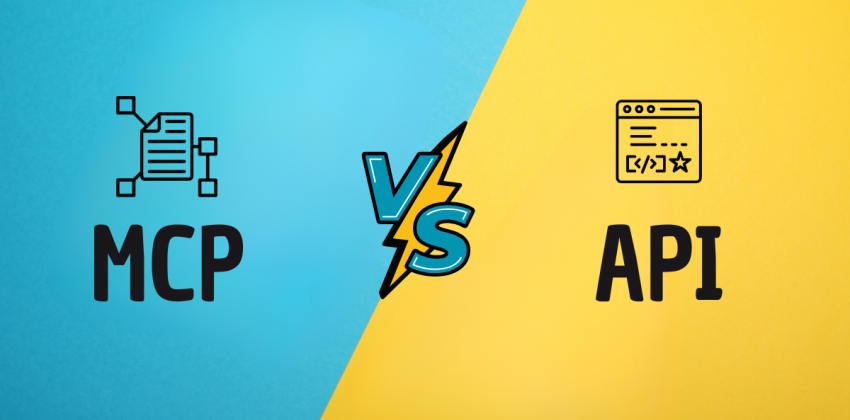MCP and Traditional APIs: How Integration Rules Are Changing
Are traditional APIs being replaced by MCP, or are they becoming central to new integration strategies?

APIs (Application Programming Interfaces) have long been the backbone of software integrations, enabling applications and services to communicate with each other seamlessly. Every time you use an app like Google Maps to find directions, check the weather, book a flight, or make an online payment, you are most likely using an API.
In recent months, however, the Model Context Protocol (MCP) has emerged as a game-changing standard. MCP is quickly establishing itself as the universal reference for integrating large language models (LLMs) with external data and services.
This protocol, specifically designed to directly connect LLMs with external services and data, has led developers and system architects to ask: will “traditional” APIs become obsolete?
The answer is no. In fact, MCP makes APIs even more strategic and central to modern architectures.
What Is an API (and Why Is It Still Essential)?
APIs allow software and applications to communicate. An API exposes endpoints through which a client can access specific functionalities. For example:
-
GET /WW-top/{country}/{vatCode_companyNumber_taxCode_or_id}allows access to over 60 data points on companies worldwide using a VAT code, tax ID, or company ID. -
POST /EU-QES_automaticmakes it possible to apply qualified signatures to documents in bulk.
The adoption of APIs is widespread and growing, thanks to their reliability, standardization, clear documentation, and reusability. APIs form the foundation of nearly every digital service we use today.
What Is MCP and Why Is It Revolutionary?
The Model Context Protocol (MCP), initially developed by Anthropic, is a recent open standard that specifies how AI companies can connect their models to data, SaaS applications, files, databases, and APIs. MCP aims to simplify and enhance interactions between LLMs and external resources by providing a structured, modular communication framework.
A distinctive feature: tool (resource) selection is performed dynamically by the LLM itself, based on the user’s input and available resources. MCP allows AI models to:
-
Dynamically discover available tools
-
Autonomously select those relevant for the current task
-
Interact with them contextually, without the need for explicit client calls
For example, if a user asks a chatbot for information about an Italian company, the LLM automatically selects the most appropriate tool for business information—coordinated via MCP.
Key Differences: MCP vs. REST APIs
Although MCP and RESTful APIs both enable integration with external services, they have fundamental differences:
| Aspect | RESTful APIs | MCP |
|---|---|---|
| Invocation Mode | Explicit HTTP calls (GET, POST, etc.), manual implementation required | Direct interaction with structured context; LLM autonomously invokes necessary tools |
| Control & Orchestration | Control is entirely with the client (developer/system decides when/how to use each API) | The AI model decides if and when to access external sources based on context and the user's request |
| Integration Handling | Each API needs dedicated integration—custom code, specific formats, key/error management | Integration via shared, structured context—model can orchestrate hundreds of APIs using a common interface |
| Scalability/Chatbots | New APIs require code changes, adding to development workload | New tools can be dynamically added to the context; the model recognizes and uses them automatically |
| Output Types | Raw or structured outputs (e.g., JSON, XML) that require manual processing | The AI model directly interprets and integrates data into natural, context-aware responses |
MCP and APIs: Complementary Technologies
In most cases, APIs themselves serve as tools invoked by an MCP server. The goal is not to choose one over the other, but to understand how they complement each other or when one approach is preferable.
MCP offers LLMs a standard interface for discovering and using tools through natural language prompts, and these tools are frequently APIs themselves. Thus, APIs do not lose prominence—they become an even more crucial component of modern AI infrastructures.
MCP acts as an abstraction layer that simplifies and standardizes access to complex tools. APIs are the solid foundation providing the functionalities that MCP leverages to complete tasks.
When Is It Still Worth Using Direct API Calls (Without MCP)?
Direct API requests remain valuable, especially when:
-
Working with a limited number of tools
-
Requiring precise control over output types (e.g., datasets) and costs
-
Needing guaranteed response times or interfacing with legacy systems
The Future of AI Integrations
AI integrations will become ever simpler, more dynamic, and more scalable. Model Context Protocol represents an important step in this direction—not replacing APIs, but enhancing their value in a world where AI is increasingly autonomous yet still requires reliable, secure, and structured access to tools and data



















